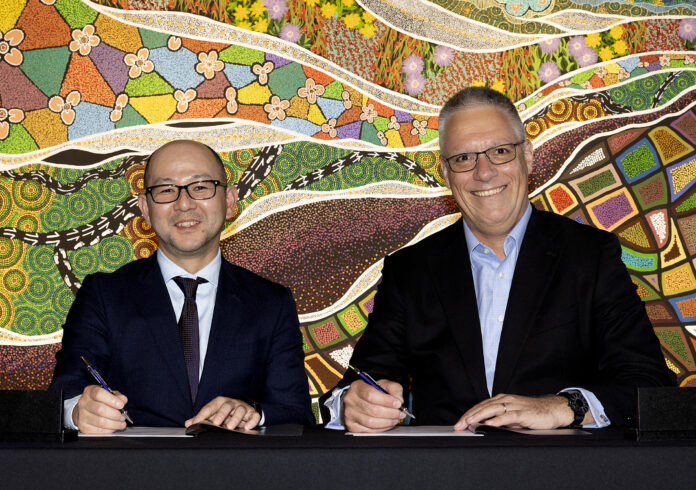
Australia and Japan have signed an agreement to enhance strategic capabilities in Robotic and Autonomous Systems (RAS) for undersea warfare, the Australia Department of Defence (DoD) announced on 23 January.
According to the DoD, the inaugural research project will contribute to strategic capabilities in undersea communication and interoperability between Australia and Japan.
The project involves Australia’s Defence Science and Technology Group (DSTG) and Japan’s Acquisition, Technology and Logistics Agency (ATLA), and marks the first effort under a bilateral research, development, test and evaluation (RDT&E) agreement signed in June 2023.
The agreement was signed by Dr David Kershaw, DSTG Chief of Science Strategic Planning and Engagement and Matsumoto Kyosuke, Director General of Technology Strategy at ATLA.
ATLA noted on its social media channel that the collaboration with DSTG “aim to establish underwater acoustic communication technology for collaboration between Underwater Unmanned Vehicles [UUVs]”.
“This project will build a foundation for future joint research on robotic and collaborative autonomy, aiming to deliver advanced capabilities to support asymmetric advantage,” said Chief Defence Scientist, Professor Tanya Monro, in a statement.
“[The new agreement] illustrates the increasingly strong defence science and technology relationship shared by Australia and Japan,” added Professor Munro. “By partnering we deliver science and technology outcomes that we cannot achieve alone.”
The Australian Defence Force (ADF) has emerged as an enthusiastic adopter of unmanned technology and has in recent years advanced its understanding of unmanned operational concepts. For example, it has published in-depth studies such as the ‘Concept for Robotic and Autonomous Systems’ in November 2020 while the RAN has released its ‘Robotics and Autonomous Systems and Artificial Intelligence Strategy 2040′ in October 2020.
The Royal Australian Navy (RAN) has also embarked on several UUV development programmes, with ongoing efforts including the Ghost Shark extra-large autonomous underwater vehicle (XL-AUV) produced by Anduril Industries.
Meanwhile, the Japan Maritime Self-Defense Force has fielded the Mitsubishi Heavy Industries (MHI) OZZ-5 UUV, which serves as the search and identification component of the service’s mine countermeasures system. Based on a prototype developed by ATLA, the production OZZ-5 is equipped with a dual-imaging sonar suite that enables it to discern buried objects at low frequencies while possessing the ability to perform high-resolution scans of exposed objects on the seabed.
by Jr Ng












